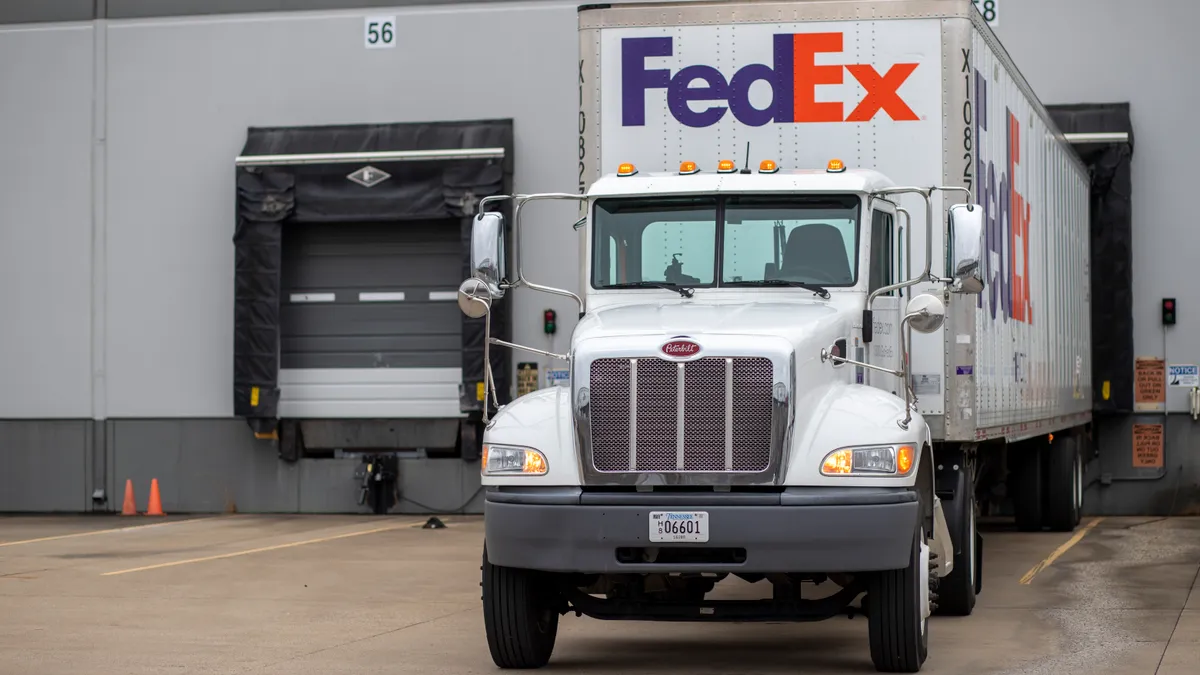NASHVILLE — The truck driver shortage is at its highest point since the American Trucking Associations began monitoring it in 2005.
The current shortage stands at 80,000, up 31% from the ATA estimate of 61,000 in 2018, according to Bob Costello, ATA chief economist. Costello unveiled the new numbers at the ATA's Management Conference and Exhibition Monday. Costello made clear the issue is not going away.
"Over the next decade, it could ... hit 160,000 at current trends," said Costello. "Let me very clear about that ... This is sort of a warning to the entire supply chain, to the motor carriers, to shippers, to everybody."
Costello said the supply chain issues of today are far reaching, from factories in Asia backed up to clogged ports to driver shortages. But if the driver shortage in particular doesn't get fixed, it will become a main cause of a future supply chain crisis.
"We're going to see these same issues of today, but solely because of the driver shortage," said Costello.
Costello said fleets have never seen such a big issue, calling it "horrendous" for many carriers.
The causes are many. The industry lost about 70,000 drivers from the Drug and Alcohol Clearinghouse of the FMCSA, Costello said. He stressed the ATA fully supports the online database of substance offenders, but its toll has been real.
Recruitment has been weak as freight demand has grown. The U.S. workforce is almost half female, but the driver population are only 8% female, Costello said. Fleets also target older candidates. The average age at CDL schools is 35, he said. Costello said life on the road at 35 is a challenge, because many people that age have families.
Instead, fleets and schools should target new candidates at younger ages. "The time to do it is at 18, 19, 20, 21, 22," said Costello. "That's the time to do it."
Solutions start at home
Costello said the main problem is within the long-haul, for-hire sector. LTL and local sectors are seeing increases in employment. Those driving jobs do require a CDL but allow more time at home, Costello said.
TL carriers should focus on recruiting young drivers who have not started a family yet, Costello said, and try to get them trained and driving within state lines. Under current federal law, drivers ages 18 to 20 cannot cross state lines. Costello said the early training is even more important now because of the advanced nature of Class 8 equipment.
Raising pay has also been a recent tactic. But Costello said the average weekly driver pay metrics ATA has been looking at is up five times the rate going back to 2000. Many fleets are also offering sign-on bonuses, something they never used to do.
Not all the solutions should be offered by carriers. Shippers have to offer the solutions too. One issue that often comes up is wait time, for which drivers are typically not paid. Wait times at ports or warehouses are often blamed for turnover. Costello said shippers must step up.
"The trucking industry alone cannot solve this," said Costello. "I tell shippers all the time ... that you can help yourself if you turn drivers around faster."
If every shipper lowered waiting times to minimum amounts, all drivers could carry more freight, increasing effective capacity without adding any new trucks or drivers, he said.
And even if drivers get paid for waiting, as some do, the waiting is a turnoff for many.
"Drivers want to drive," said Costello.
Jim Burg, president and CEO of James Burg Trucking, said waiting one or two hours is still a risk for drivers' paychecks, even if they are paid. Burg said drivers' work hours are limited, and wait time can cause drivers to be sidelined for rest, causing them to miss loads.












